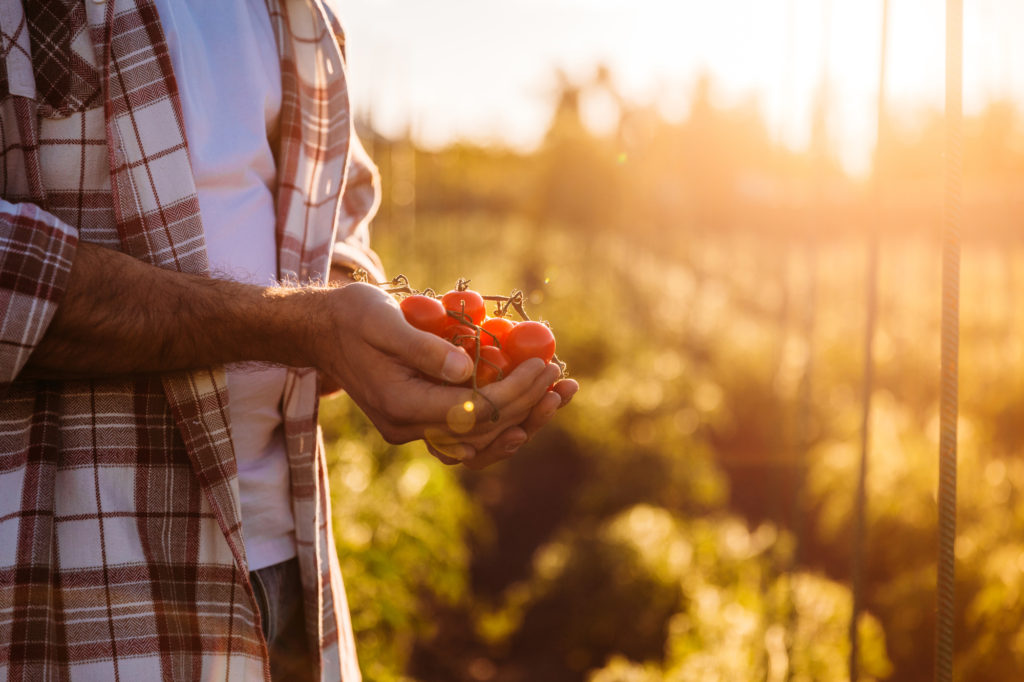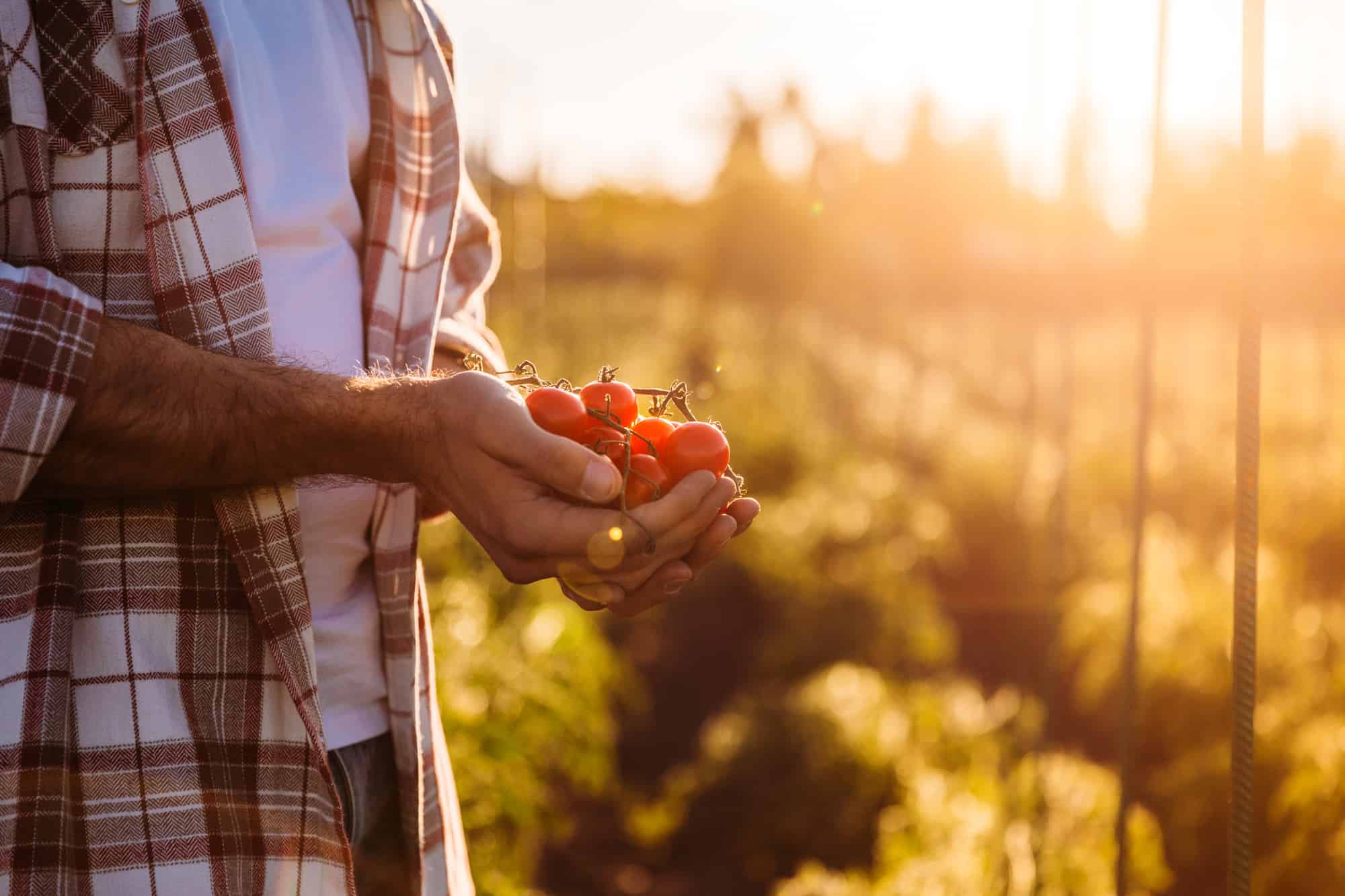
There are three critical variables you must consider when planning a vegetable garden. Get these three things right and you’ll be happy gardener with tasty vegetables and fruits all season—and year—long.
The three variables are temperature, rainfall and sunlight. In this article, we’re going to zero in on the latter. So how much rainfall do garden vegetables need?
Vegetables grown for their fruits need a minimum of six to eight hours of direct light each day. However, leafy vegetables and root crops, such as carrots, give satisfactory results in light or partial shade.
How Much Sunlight Do My Garden Vegetables Need?
Sunlight — or some type of light — provides energy that turns water and carbon dioxide into the sugar that plants use for food. Green plants use sugar to form new cells, to thicken existing cell walls, and to develop flowers and fruit.
The more intense the light, the more effective it is. Light intensity, undiminished by obstructions, is greater in the summer than in the winter, and greater in areas where the days are sunny and bright than in areas where it’s cloudy, hazy, or foggy.
As a rule, the greater the light intensity the greater the plants’ production of sugar — provided, of course, that it’s not too hot or too cold and the plants get the right amount of water.
If a plant is going to produce flowers and fruit, it must have a store of energy beyond what it needs just to grow stems and leaves. If the light is limited, even a plant that looks green and healthy may never produce flowers or fruit.
This can be a problem with vegetables like tomatoes, where you want to eat the fruit.
With lettuce, where you’re only interested in the leaves, it’s not an issue. All the same, all vegetables need a certain amount of light in order to grow properly, and without it all the watering, weeding, and wishing in the world will not make them flourish.
How Day Length and Sunlight Affect Your Vegetables
Many plants, including tomatoes and many weeds, are not affected by day length — how long it stays light during the day.
But for many others, the length of the day plays a big part in regulating when they mature and flower.
Some plants are long-day plants, which means they need 12 or more hours of sunlight daily in order to initiate flowering.
Radishes and spinach are long-day plants, and this is the main reason they go to seed so fast in the middle of the summer when the day length is more than 12 hours. If you want to grow radishes or spinach in midsummer, you have to cover them with a light-proof box at about 4 p.m. every afternoon to fool them into thinking the day’s over.
Other plants are short-day plants and need less than 12 hours of light to initiate flowering; soybeans and corn are examples. Many varieties of short-day plants have been bred to resist the effects of long days, but most will still flower more quickly when the days are shorter.
What If My Plants Don’t Get Enough Light?
Less light frequently means less than a full crop. It’s very frustrating to try to grow tomatoes, peppers, or eggplants in the shade; they’ll often produce a good, green plant without giving you anything at all in the way of a vegetable.
Crops that are grown for their roots and leaves, however, will give you satisfactory results in light shade. Root crops, such as beets, carrots, radishes, and turnips, store up energy before they flower and do rather well in partial shade, especially if you don’t compare them with the same crop grown in full sun.
Plants like lettuce and spinach that are grown for their leaves are most tolerant of shade; in fact, where the sun is hot and bright they may need some shade for protection.
Only mushrooms and sprouts can be produced without any light at all.
Making the Most of Your Garden Light
If you have a choice of where to grow your vegetable garden, don’t put it in the shade of buildings, trees, or shrubs.
Remember that as well as shading an area, trees and shrubs also have roots that may extend underground well beyond the overhead reach of their branches. These roots will compete with the vegetable plants for nutrients.
Stay clear especially of walnut trees; they produce iodine, a growth retardant that will stunt or kill the vegetable plants in your garden.
Go out and stand in your garden to see just how the light falls. Walk around and find where the light fails to penetrate. This knowledge will be very useful when you come to planting time.
Providing Shade from Too Much Sun
Most vegetables need full sun for best growth, but young or newly transplanted plants may need some protection from bright, direct sunlight.
It’s easier for you, as a gardener, to provide shade where there’s too much sun than to brighten up a shady area.
You can, for instance, plant large, sturdy plants like sunflowers or Jerusalem artichokes to provide a screen, and you can design your garden so that large plants and small ones each get the light they need.
You can also shade young plants with boxes or screens when necessary. However, too little sun is far more serious a problem in a garden than too much.
Final Thoughts
Gardens need sunlight. Some more, some less. But that’s the bottom line. Always remember that vegetables grown for their fruits need somewhere between six to eight hours of direct light every day. (However, leafy vegetables and root crops, such as carrots, will work with partial shade.)
So in planning your garden, always keep in mind the sun and make sure you situate your garden in spot that’s going to shower your veggies with lots of sunlight.

